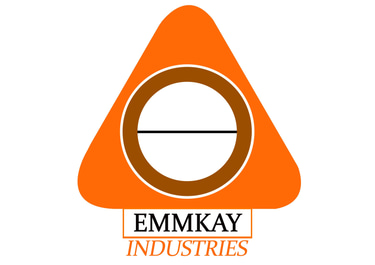Tablet Tooling Standards
Understanding and implementing global tablet tooling standards.
Navigating the World of Tablet Tooling Standards
Understanding and implementing global tablet tooling standards is essential for achieving consistency and efficiency in tablet manufacturing. At EMMKAY Industries, we recognize the importance of these standards in facilitating rigorous quality control and standardized production across the industry.
This blog is designed to guide you through the fundamentals of global tablet tooling standards, covering everything from broad introductions to detailed comparative analyses.
1: An Introduction to Global Tablet Tooling Standards
Tablet tooling standards serve as critical guidelines that ensure uniformity and precision in tablet compression processes. Two primary standards influence global manufacturing:
Tableting Specification Manual (TSM) – A guideline from the American Pharmaceutical Association that uses units common in the United States. It is widely adopted in industries across the USA and Japan, helping to reduce tooling variations through harmonization.
Euro Standard (EU) – Commonly used in Europe and globally adopted, this guideline adheres to ISO18084 standards, ensuring consistent tooling practices and measurements.
These standards play a decisive role in maintaining quality in tablet production while simplifying global regulatory compliance. By offering clear parameters for tooling dimensions and performance, both the TSM and EU standards create a robust framework for manufacturers worldwide.
Key Points:
TSM focuses on U.S. measurement units and harmonization, notably in the USA and Japan.
The EU standard follows ISO 18084 and is recognized across various markets globally.
Both standards ensure precision, reducing variability in tablet tooling and product output.
2: Exploring the Euro Standard (EU)
The Euro Standard has a prominent place in global tablet tooling due to its wide adoption and adherence to ISO 18084 protocols. This standard is known for its simplicity and universality:
Global Reach: Although it is predominantly based in Europe, the Euro Standard is embraced by manufacturers worldwide, providing a common language for tablet tooling.
Tooling Types: The standard includes typical tooling sizes such as B and D tooling. These configurations are sometimes referred to as TSM19 and TSM1 based on their respective punch body diameters.
Uniform Production: The Euro Standard facilitates uniform tablet production by establishing clear and repeatable tooling metrics, enhancing inter-facility consistency.
Manufacturers using the Euro Standard benefit from reduced cross-border discrepancies, ensuring high product quality no matter where production takes place.
Highlights:
Establishes international commonality in tooling practices.
Maintains strict dimensions for tooling components.
Enhances quality and consistency across multinational production lines.
3: Deep Dive into TSM Standards
Focusing on the TSM (Tableting Specification Manual), this standard has become a benchmark for many manufacturers in the United States and Japan. Key attributes include:
Harmonization of Tooling Variations: TSM standards help in aligning manufacturing processes by standardizing the dimensions and tolerances of tablet tooling.
Industry Prevalence: Due to its robust framework, TSM is frequently adopted not only in the USA but in regions where precise tablet formation is crucial.
Operational Efficiency: By ensuring that tooling elements like punches and dies conform to specific measurements, manufacturers can minimize errors and enhance production rates.
This harmonization not only boosts production quality but also facilitates easier compliance with regional and international quality regulations. Manufacturers benefit from reduced discrepancies between tooling sets, ultimately leading to a more streamlined production process.
Key Considerations:
Emphasis on standardized measurements significantly lowers variability.
TSM supports high-precision tooling vital for tablet consistency.
Adoption in major pharmaceutical hubs such as the USA and Japan underscores its reliability.
4: Understanding B and D Tooling: Key Differences
A close look at tooling configurations under both the TSM and Euro Standards reveals distinct differences, particularly between B and D tooling. The following provides a comparative analysis of key dimensions:
Practical Applications:
B/BB Tooling: Ideal for high-output production settings and smaller tablets.
D Tooling: Preferred for manufacturing larger, heavier tablets that require greater volume and stability during compression.
DB Tooling: Delivers a hybrid approach suited for high-volume manufacturing where larger, heavier tablets are required.
This comparative understanding assists manufacturers in selecting the optimal tooling for their specific production needs. By aligning tooling choice with desired tablet dimensions and compressive force requirements, producers can significantly enhance both efficiency and quality.
Comparative Insights:
B and BB Tooling: Best suited for smaller tablets with high output efficiency.
D Tooling: Optimal for larger tablets requiring robust structural integrity.
DB Tooling: Balances the advantages of B and D Tooling.
Choosing the correct tooling ensures precise tablet dimensions and reduces potential for manufacturing errors.
Summary
Navigating tablet tooling standards is essential for ensuring high-quality pharmaceutical manufacturing. This series has walked you through:
Introduction to Global Standards – Understanding the TSM and Euro Standards.
Exploring the Euro Standard – Detailing its global adoption and consistency.
Deep Dive into TSM – Exploring its prevalence and harmonization benefits.
Comparing B and D Tooling – An in-depth look at dimensional differences and applications.
For more insights on how these standards can elevate your manufacturing process, visit EMMKAY Industries. Our expertise in state-of-the-art tooling and manufacturing standards positions us perfectly to support your productivity improvements and quality assurance needs.







